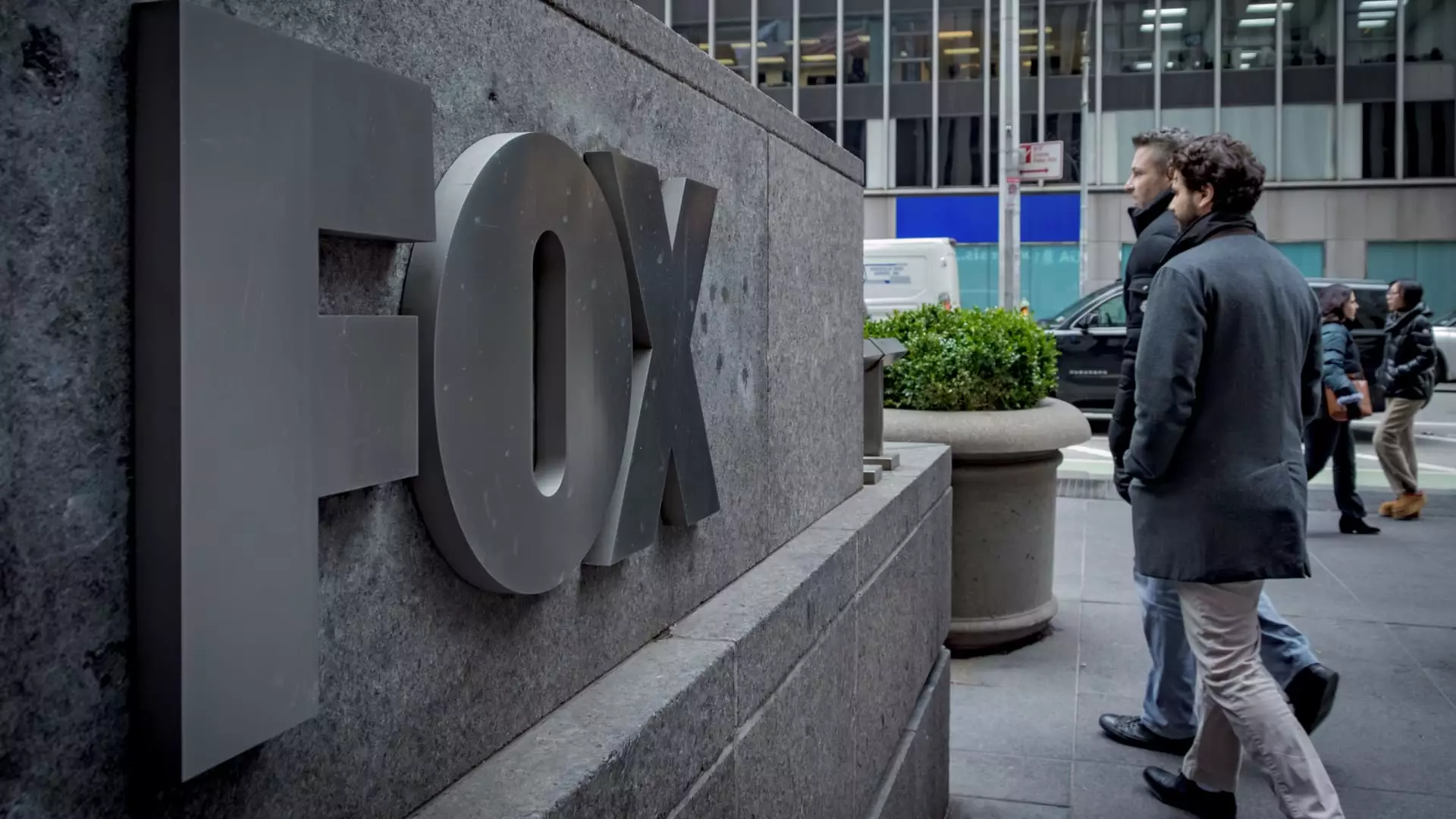Fox Corp.’s upcoming foray into the crowded arena of streaming with its service Fox One is more than just another entry in a saturated market; it signals a transformative moment for the media giant. Unveiled by CEO Lachlan Murdoch during a quarterly earnings call, the impending launch is strategically timed to coincide with the anticipation of the National Football League (NFL) season, hoping to capture both die-hard football fans and casual viewers alike. This move raises pivotal questions about the long-term implications of consumer habits in entertainment, and whether Fox One could potentially disrupt the conventional cable model they’ve relied on for decades.
The company is currently teetering on a tightrope, trying to establish itself as a reputable digital player without alienating its traditional cable subscriber base. Murdoch emphasized that pricing would reflect the competitive nature of wholesale costs rather than offering a bargain to attract subscribers. This suggests a desire to maintain value in its traditional advertising model while still capturing a slice of the direct-to-consumer pie, a balancing act that few have managed seamlessly.
The Problem with Streaming Saturation
As we navigate the unfolding dynamics of streaming in the media industry, one can’t help but acknowledge the glaring oversaturation of services vying for consumers’ attention. Fox One enters a marketplace already brimming with offerings, from established players like Netflix and Disney+ to niche services that cater to specific interests. In this environment, differentiation becomes crucial, but it’s also perilous; one misstep can lead to significant financial repercussions.
Murdoch’s cautionary stance on pricing is entirely justified. The streaming landscape has been marked by aggressive promotional strategies, often driven by a race to the bottom regarding subscription costs. Consumers now appear desensitized to discounts, making real value harder to discern. Fox’s intent to provide a premium experience without going the discount route is commendable but raises the question: will consumers see enough unique value in Fox One to justify its price?
Moreover, the approach risks highlighting the growing divide between a consumer base that prefers the accessibility and flexibility of streaming and one that clings to its traditional cable infrastructure. As more people realize they can curate their viewing choices through on-demand platforms, Fox’s attempts to solidify its subscriber base through other bundles may simply delay an inevitable transition.
The Financial Landscape: Success Amidst Change
From a financial perspective, Fox’s quarterly earnings reveal a healthy growth trajectory, bolstered significantly by the Super Bowl—an event that continues to attract massive advertising revenue. The 65% increase in ad revenue within a single quarter is indicative of Fox’s unique position in the media world. However, it’s essential to recognize that a high-revenue quarter doesn’t guarantee stability in the long run, especially when navigating the choppy waters of digital transformation.
Fox’s financials may be robust, but they also highlight the precarious nature of advertising-driven revenue streams. Advertisers are beginning to scrutinize where they invest their marketing dollars. As viewers shift away from live events to streaming services, the question arises: can Fox continue to command premium rates for advertising when traditional viewership is on a downward trajectory?
This situation exemplifies a broader trend in the media landscape. The NFL may provide a temporary buoy, but with more options for consumers and less time available for ads, the advertising future appears less certain.
Bundling Strategies: A Double-Edged Sword
Murdoch’s remarks about potential bundling with other services encompass both ambition and caution. While partnering with existing streaming platforms and traditional distributors may foster growth, it could also lead to consumer confusion about what is ultimately being offered. The risk is that Fox One may become just another cog in an increasingly complex wheel of services rather than a standout choice for viewers.
Setting expectations through strategic partnerships is certainly beneficial. However, Fox must tread carefully; ensuring a user-friendly, intuitive interface is just as essential as promoting content. As seen with other platforms, user experience plays a pivotal role in retention, especially among younger viewers accustomed to seamless access to entertainment.
Fox One is poised to become a significant player in the streaming world, a bold move in a time of change. Whether it can sustainably attract subscribers while keeping traditional channels afloat remains to be seen. Only time will tell whether this daring venture pays off, but one thing is certain: the stakes have never been higher.

